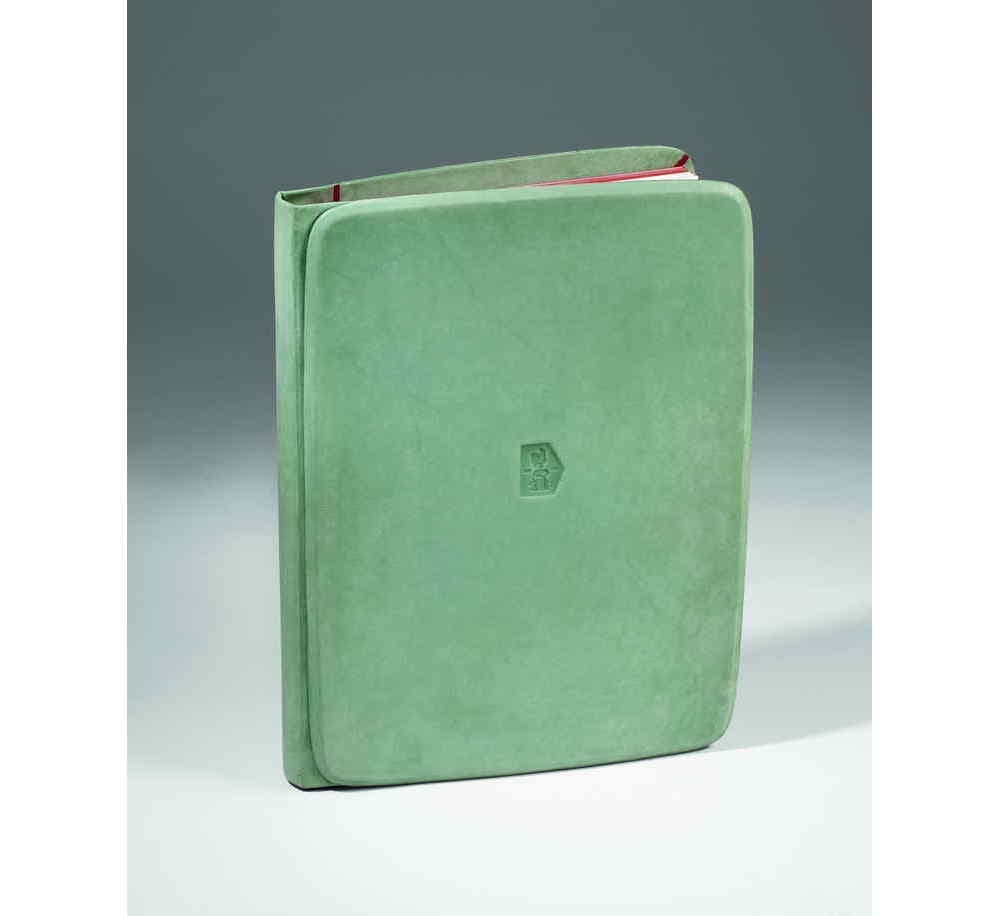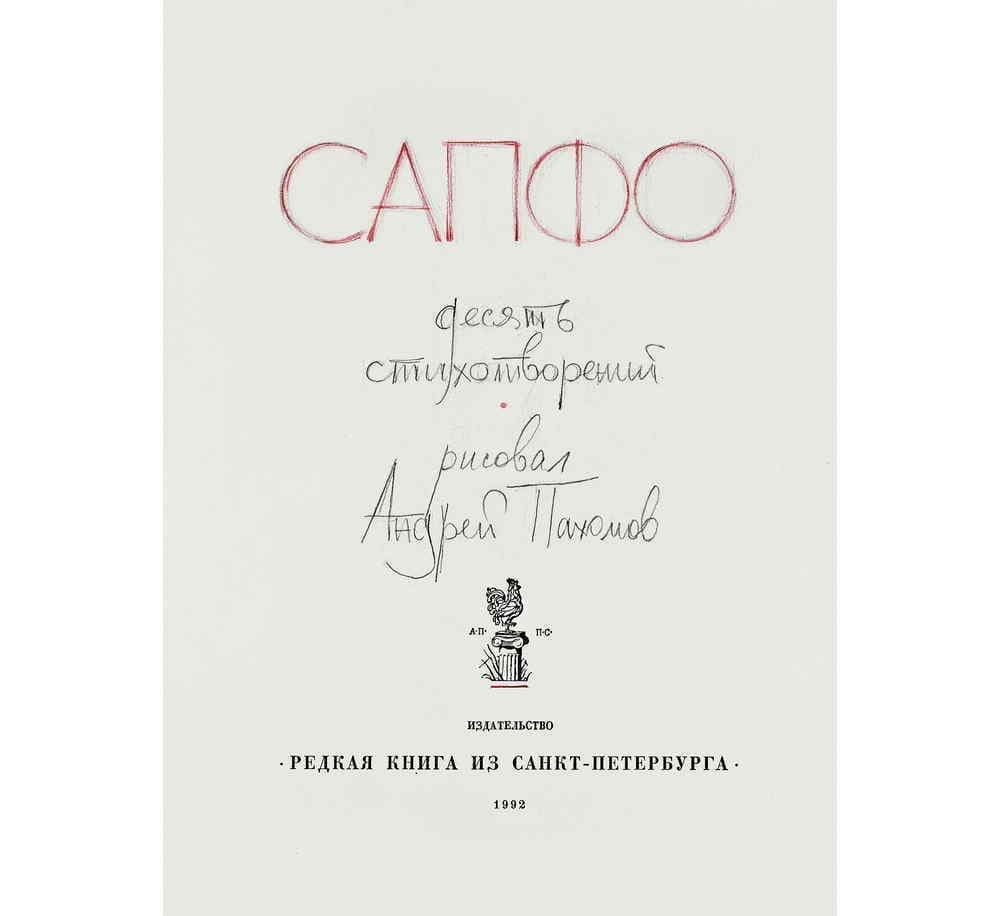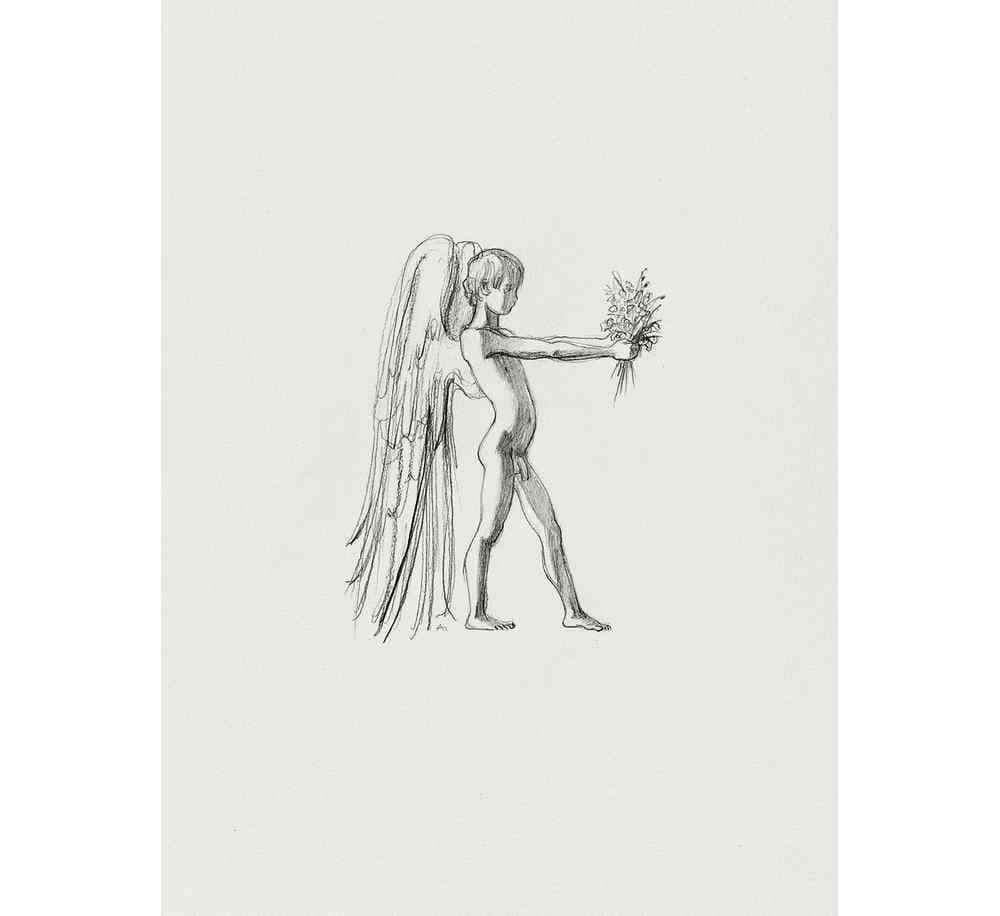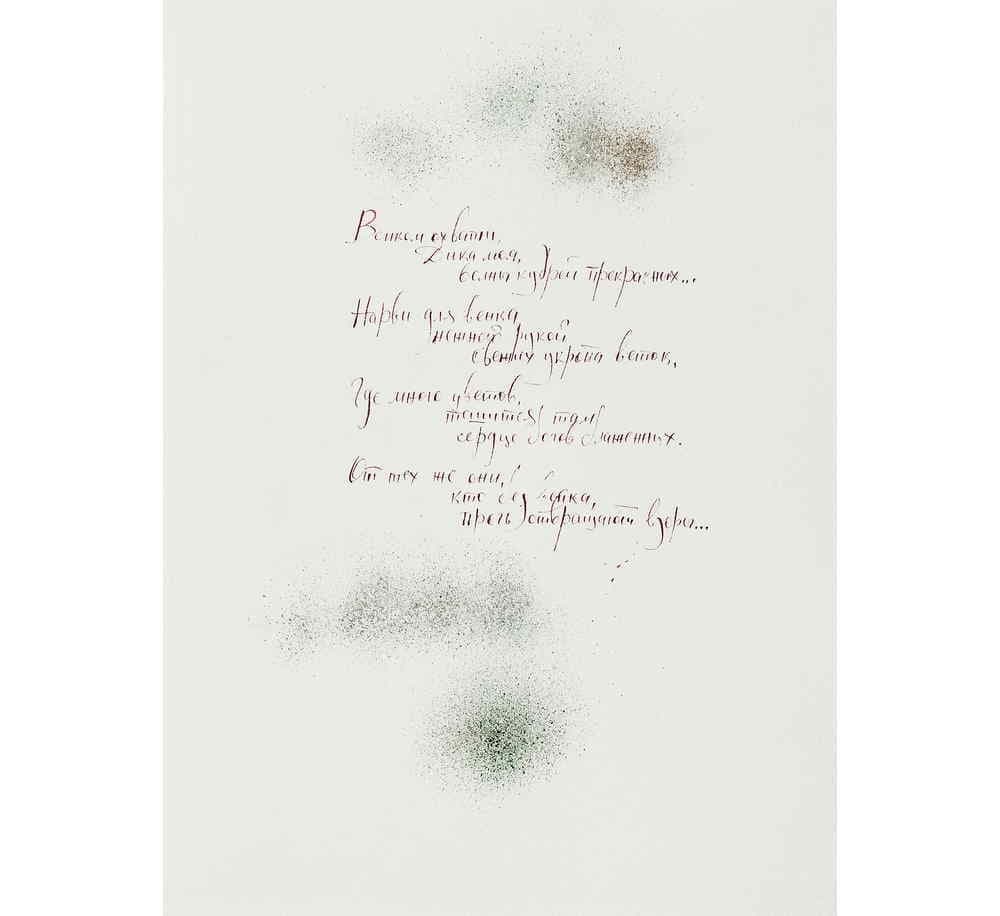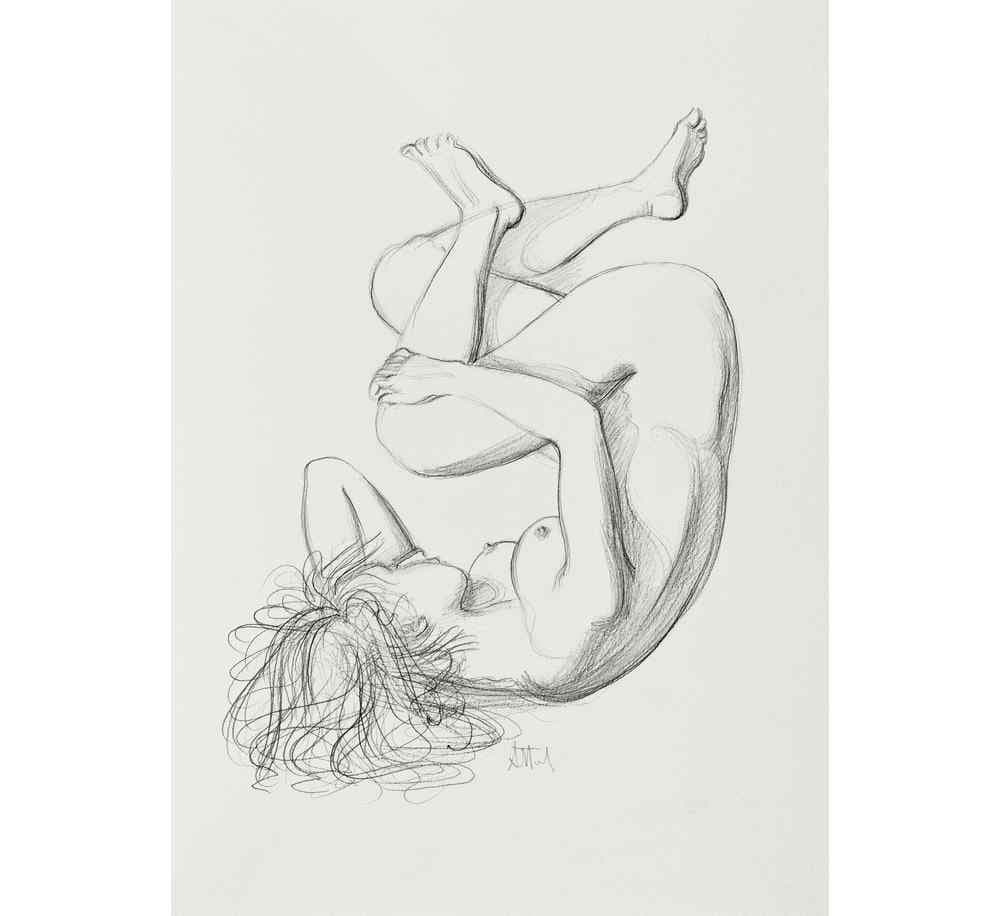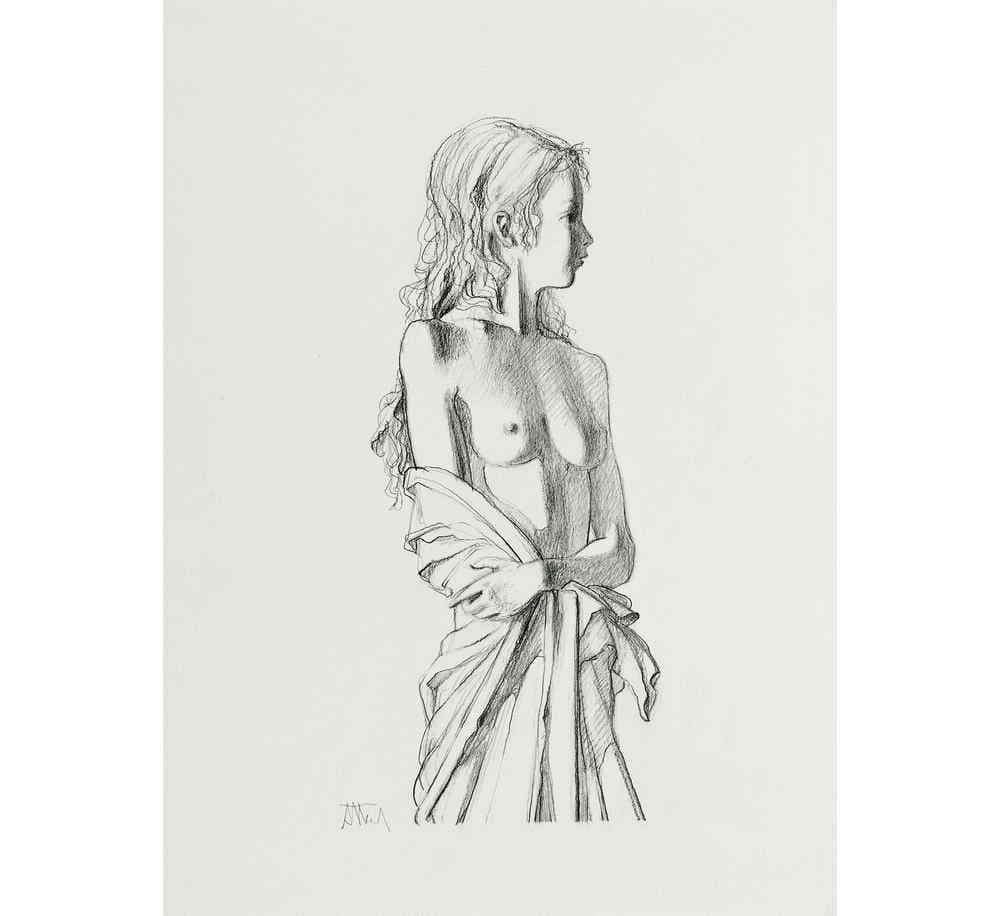TEN POEMS
Selected verses by the Ancient Greek poetess and musician Sappho, full of sensuality and personal emotional experience. The handwritten text and pencil drawings created by the artist Andrei Pakhomov are consonant with the simplicity and vivid brightness of the poems.
Additional information
Details of the creation of this masterpiece
-
Year of publication:1992
-
Number of pages:76
-
Dimensions:412 × 306 mm
-
Paper:Aquarelle d’Arches (France), 280 g/m², handmade
Women on the island of Lesbos (and the Aeolian region generally) enjoyed greater freedom than in other parts of the Greek world. There were practically no restrictions on their social activities. Part of the family property, for example, could be passed down in the female line. Alongside the male hetaeriae religious brotherhoods, the island retained similar sororities for women known as thiasoi.
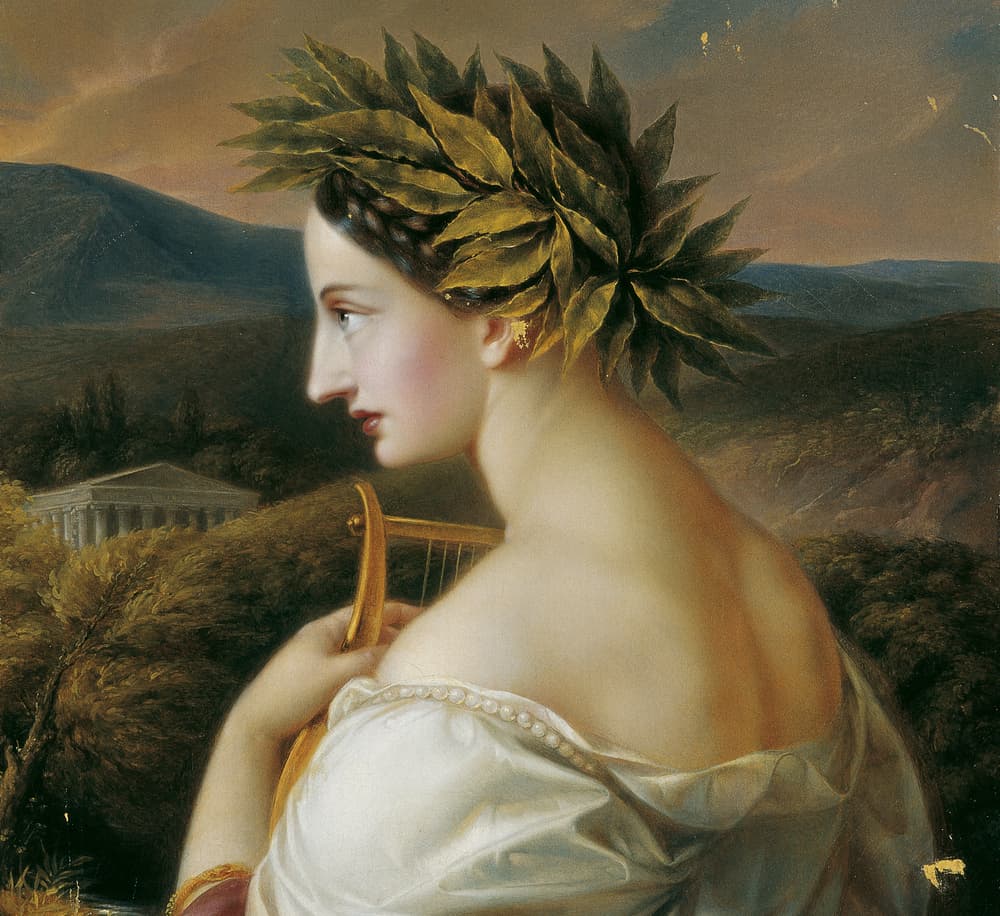
Traditional folklore elements form the base of Sappho’s poetry. The predominant motifs are love and separation. Events take place against a background of bright, joyful nature, babbling streams, incense burning in the grove of the goddess. The chief strength of her verses is considered to be intense passion, naked emotion expressed with exceptional vivid simplicity. Love, as Sappho perceives it, is a terrible elemental force, a “bitter-sweet monster from which there is no defence”. Sappho strove to convey her feelings, combining mental states with physical sensations (fire beneath the skin, ringing in the ears and so on).
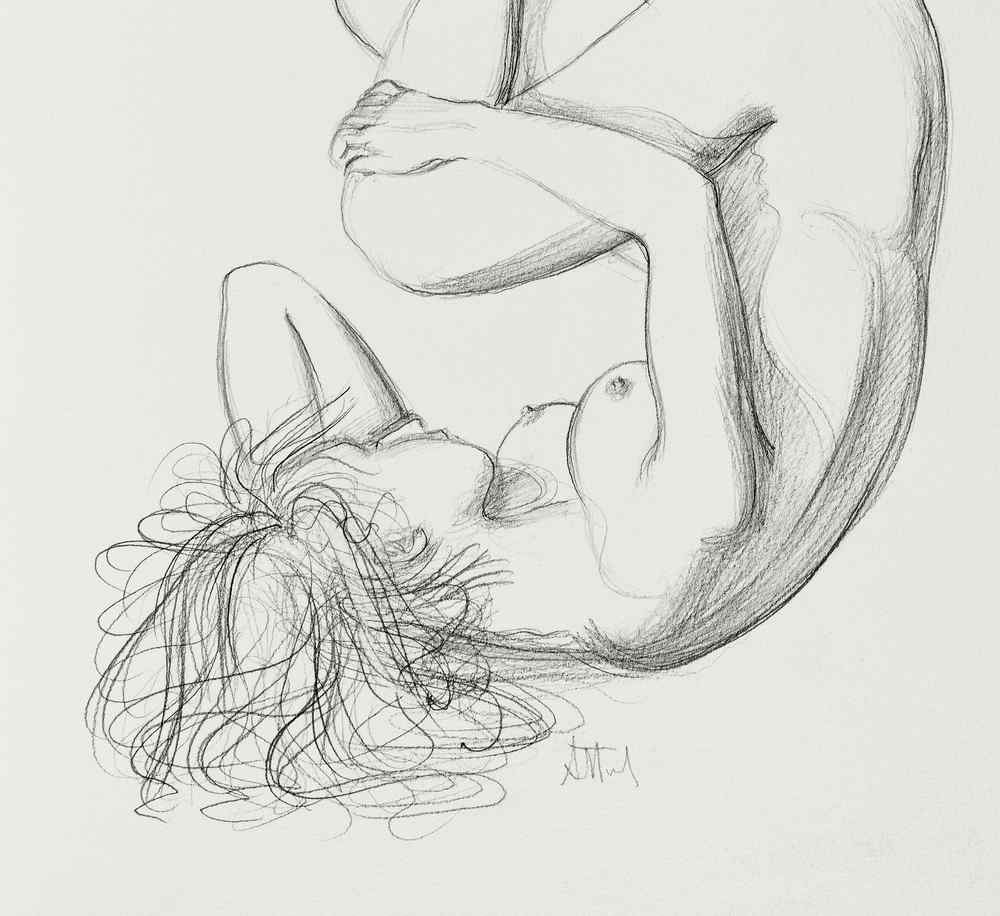
Sappho is known for having introduced wedding songs – the hymenaois and epithalamion – into literature.
The book contains 21 pencil drawings and 11 pages with text written in a cursive script. It is bound in matte green leather. The front cover is decorated with a blind embossed depiction of a cockerel on top of a classic Ionic capital.
Creator of the illustrations, design of the cover, handwritten texts — Andrei Pakhomov
Binding work — Andrei Degtev, Konstantin Svetlov

Additional information
Details of the creation of this masterpiece
-
Year of publication:1992
-
Number of pages:76
-
Dimensions:412 × 306 mm
-
Paper:Aquarelle d’Arches (France), 280 g/m², handmade
Women on the island of Lesbos (and the Aeolian region generally) enjoyed greater freedom than in other parts of the Greek world. There were practically no restrictions on their social activities. Part of the family property, for example, could be passed down in the female line. Alongside the male hetaeriae religious brotherhoods, the island retained similar sororities for women known as thiasoi.

Traditional folklore elements form the base of Sappho’s poetry. The predominant motifs are love and separation. Events take place against a background of bright, joyful nature, babbling streams, incense burning in the grove of the goddess. The chief strength of her verses is considered to be intense passion, naked emotion expressed with exceptional vivid simplicity. Love, as Sappho perceives it, is a terrible elemental force, a “bitter-sweet monster from which there is no defence”. Sappho strove to convey her feelings, combining mental states with physical sensations (fire beneath the skin, ringing in the ears and so on).

Sappho is known for having introduced wedding songs – the hymenaois and epithalamion – into literature.
The book contains 21 pencil drawings and 11 pages with text written in a cursive script. It is bound in matte green leather. The front cover is decorated with a blind embossed depiction of a cockerel on top of a classic Ionic capital.
Creator of the illustrations, design of the cover, handwritten texts — Andrei Pakhomov
Binding work — Andrei Degtev, Konstantin Svetlov

Sappho
TEN POEMS
Selected verses by the Ancient Greek poetess and musician, full of sensuality and personal emotional experience





